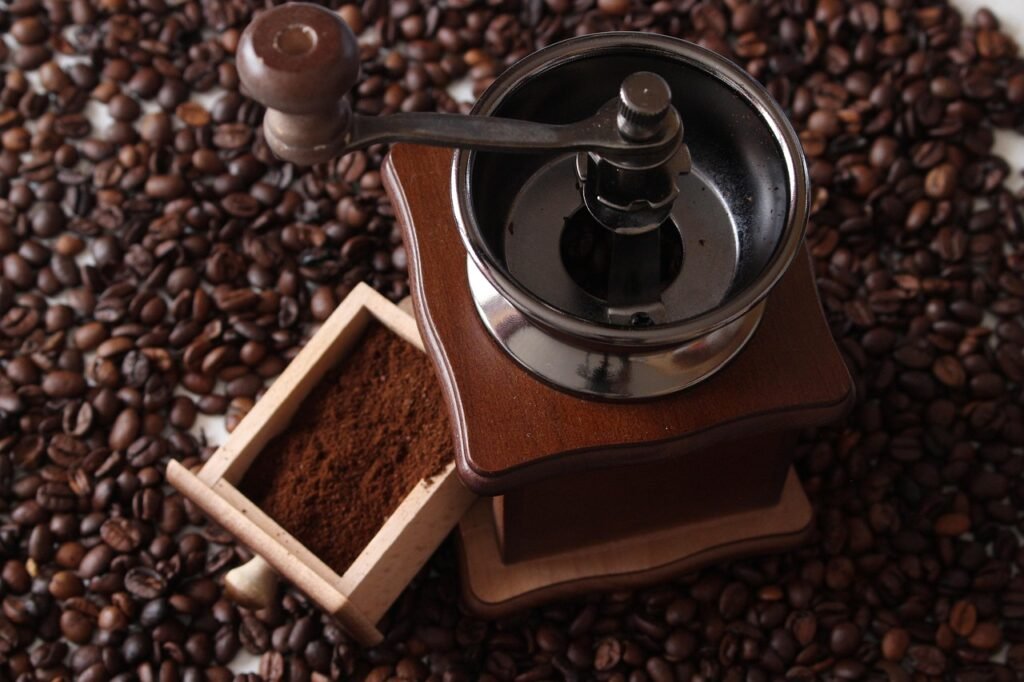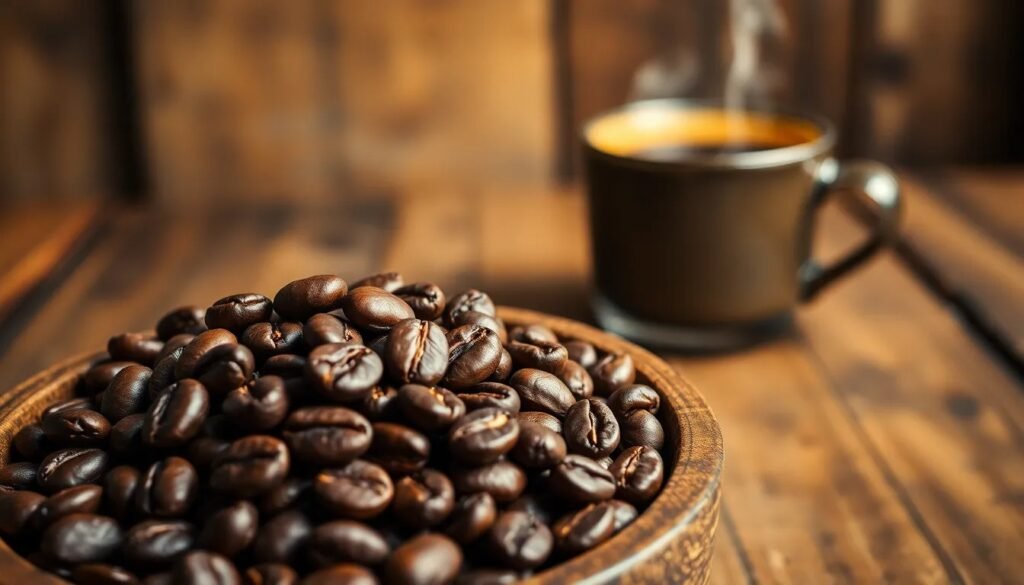Curious about how much caffeine lurks in your French press coffee? You might be surprised by the numbers. This brewing method is renowned for extracting rich, robust flavors, but it also delivers a notable caffeine punch. In fact, French press coffee typically contains more caffeine than your average drip brew. Our deep dive into caffeine content will unveil why this method stands out and how various factors, from bean selection to steeping time, play a crucial role. Join us as we unravel the amount of caffeine in French press coffee and offer insights to tailor your perfect cup.
Understanding the Amount of Caffeine in French Press Coffee
French press coffee usually contains between 80 to 135 mg of caffeine per 8-ounce serving. This range depends on factors like coffee-to-water ratio and brewing time. French press coffee often has more caffeine than drip coffee, which averages about 95 mg per 8-ounce cup. The longer steeping process in French press brewing extracts more caffeine, creating a robust flavor compared to brewing methods like espresso or lattes, which have lower caffeine per ounce.
- Coffee Bean Type: Arabica beans have less caffeine than Robusta beans, affecting overall caffeine content.
- Grind Size: Finer grinds increase caffeine extraction, while coarser grinds decrease it.
- Brewing Time: Longer steeping extracts more caffeine; 4-5 minutes is standard.
- Water Temperature: Higher temperatures lead to more caffeine extraction.
- Coffee-to-Water Ratio: A higher ratio makes a more concentrated brew, raising caffeine levels.
The amount of caffeine in French press coffee varies due to its flexible brewing parameters. The type of bean, grind size, and brewing time affect caffeine concentration, allowing drinkers control over their brew’s strength. This flexibility attracts those who want a strong caffeine hit or a milder cup by adjusting these factors.
French Press Coffee vs. Other Brewing Methods: Caffeine Levels Compared

The French press uses a unique process, with longer steeping times, allowing for higher caffeine content than many methods. This is crucial for coffee enthusiasts who tailor their caffeine intake. Knowing these differences helps in choosing a method that suits personal dietary needs and preferences.
French press coffee usually has more caffeine than espresso or lattes per serving. Though espresso is strong, it has about 63 mg of caffeine per 1-ounce shot. French press offers 80 to 135 mg per 8-ounce cup, while drip coffee averages 95 mg for the same size. Cold brew, with its longer steeping period, can exceed French press levels, providing an intense caffeine experience.
The key lies in steeping time and extraction method.
- French press benefits from longer steeping, enhancing caffeine extraction.
- Drip coffee uses percolation for efficient extraction over a shorter time.
- Cold brew, with extended steeping at cooler temperatures, extracts high caffeine levels.
- Espresso’s rapid extraction gives less caffeine per ounce but remains intense due to its concentration.
Factors Affecting Caffeine Levels in French Press Coffee
What effect does coffee bean type have on caffeine levels? Arabica beans, valued for their smooth flavor, have less caffeine than robust Robusta beans. Robusta’s higher caffeine content makes them ideal for those wanting a stronger caffeine kick. This difference significantly impacts the caffeine level in a French press brew.
Grind size is crucial for caffeine concentration. Finer grinds expose more surface area, leading to higher caffeine extraction. Coarser grinds reduce caffeine levels because larger particles limit extraction. Adjusting grind size can modulate caffeine content to taste.The brewing time is also important. Longer steeping extracts more caffeine; 4-5 minutes is typical.
Together, these factors determine the amount of caffeine in French press coffee. Understanding and adjusting these variables allow coffee lovers to tailor their brews to reach preferred caffeine levels, whether seeking a strong or mild cup. This
Adjusting Caffeine Levels in Your French Press Brew

To reduce the amount of caffeine in French press coffee, use coarse grinds to limit caffeine extraction, as they have less surface area. Shortening steep time below the standard 4-5 minutes also lowers caffeine levels. Using fewer grounds or decreasing the coffee-to-water ratio results in a milder brew with less caffeine. These adjustments allow for a smoother drink without excessive caffeine, helpful for those sensitive to it.
- Finer Grind Size: Increases surface area, boosting caffeine extraction.
- Longer Steep Time: Extracts more caffeine, making a stronger brew.
- Higher Coffee-to-Water Ratio: Concentrates caffeine for a potent cup.
- Hotter Water Temperature: Enhances caffeine extraction by increasing solubility.
- Use of Robusta Beans: Naturally contains more caffeine than Arabica.
Home roasting offers control over bean selection, roast level, and freshness. By choosing specific beans and experimenting with roast profiles, you can fine-tune caffeine content to match your preferences. This customization ensures each cup matches your desired caffeine intake, making home-roasting appealing for those seeking precision.
The Impact of Coffee Bean Type and Roast Level on Caffeine Content
Arabica beans have less caffeine than Robusta. Robusta’s higher caffeine nearly doubles that of Arabica, significantly affecting a French press brew’s caffeine level. This stems from genetic and environmental distinctions between the two bean types. Arabica offers smoother tastes, while Robusta’s higher caffeine results in a stronger, bitter flavor. Choosing between these allows coffee lovers to adjust their French press brew’s caffeine strength.
How does roast level impact caffeine content? While darker roasts have bold flavors, lighter roasts typically have more caffeine. The roasting process changes bean structure, with lighter roasts keeping more caffeine. Darker roasts roast longer, which can lower caffeine due to heat exposure. Home-roasted beans let you choose bean type and roast level, allowing for optimal caffeine control, offering a tailored coffee experience with each brew.
Final Words
Exploring the amount of caffeine in French press coffee reveals significant insights into its composition compared to other methods. A French press can yield more caffeine than espresso or drip coffee, but less than cold brew, primarily due to its extended steeping process.
Factors such as bean type, grind size, and brewing time all play crucial roles in caffeine content determination. Adjustments in preparation can enhance or reduce caffeine levels, offering a tailored experience.
Understanding these elements allows for a personalized coffee experience, ensuring each cup meets individual caffeine preferences.
FAQs
How much caffeine is in an 8 oz serving of French press coffee?
French press coffee generally contains between 80 to 135 mg of caffeine per 8-ounce serving. This variance depends on factors like coffee-to-water ratio and brewing time.
Is French press coffee higher in caffeine compared to espresso?
French press coffee generally has more caffeine than espresso. While espresso has a denser caffeine concentration, French press offers a greater total caffeine content per serving.
How does the caffeine content in French press coffee compare to drip coffee?
French press coffee tends to have 15-20% more caffeine compared to drip coffee. This difference is largely due to its longer steeping process.
Does French press coffee have more caffeine than percolated coffee?
French press coffee typically has a similar or slightly higher caffeine content than percolated coffee. Variations come from brewing time and coffee-to-water ratio differences.
How can one reduce caffeine levels in French press coffee?
To reduce caffeine content in French press coffee, use coarsely ground beans, shorten steeping time, or decrease the coffee-to-water ratio. These adjustments lower caffeine extraction.













